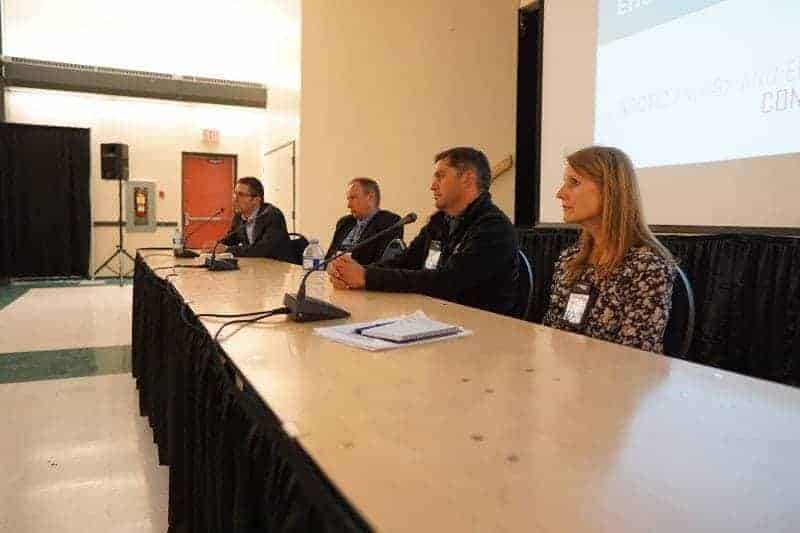The Inuvik Wind Project was highlighted as a key example of energy from the Arctic intended to meet Arctic needs at the Arctic Energy and Emerging Technologies Conference and Trade Show June 12.

Samantha McKay/NNSL photo
Geraldine Byrne, manager of energy research and development for the Government of the Northwest Territories (GNWT), discussed the present and future of the Inuvik Wind Project at the Energy from the Arctic for Arctic Needs panel discussion session Tuesday afternoon.
The project, which is part of the GNWT's 2030 energy strategy, is expected to reduce the territory's greenhouse gas emissions by 36 per cent.
"It would be a local source of renewable energy, Inuvik does have a good wind regime," Byrne said in her talk at the session. "It would also diversify Inuvik's electricity supply. Currently, it's at about 40 per cent [liquefied natural gas], and 60 per cent diesel. The future electricity mix, we'd see the wind coming in around 30 per cent, [liquefied natural gas] at 40 per cent, and diesel at 30 per cent."
The wind site, estimated to cost around $40 million, will be located northeast of the airport. The project will be subsidized by the federal government and the GNWT.
Byrne said there are many logistics that need to be considered before the project can come together.
"To move a crane into Inuvik to erect the tower could mean … splintering that crane over 10 trucks to get it here," she said. "There are lots of logistics to work through."
Byrne said GNWT is working with local Indigenous groups and other local stakeholders to understand what level of involvement they would like to have in the project.
Grant Sullivan, executive director of the Gwich'in Council International, spoke at the session about how Arctic energy needs are similar across the circumpolar region.
"A lot of the solutions that we need to be looking for are circumpolar. It's not north and south – we need to be drawing on the circumpolar North," said Sullivan. "We're all facing the same issue: how do we do this?"
He said communities and stakeholders in the Arctic need to pull together to find solutions for collective problems.
Robert Cooke, senior technology advisor for Polar Knowledge Canada also spoke on the panel and highlighted that the main issue to bringing clean energy to the North is one of capability and capacity, not financial.
"The federal government is putting up a considerable amount of funding for clean energy projects," Cooke said. "I think one of the barriers is actually capability and capacity. Not necessarily the capacity to build the projects, but the capacity to maintain the projects once they're built."